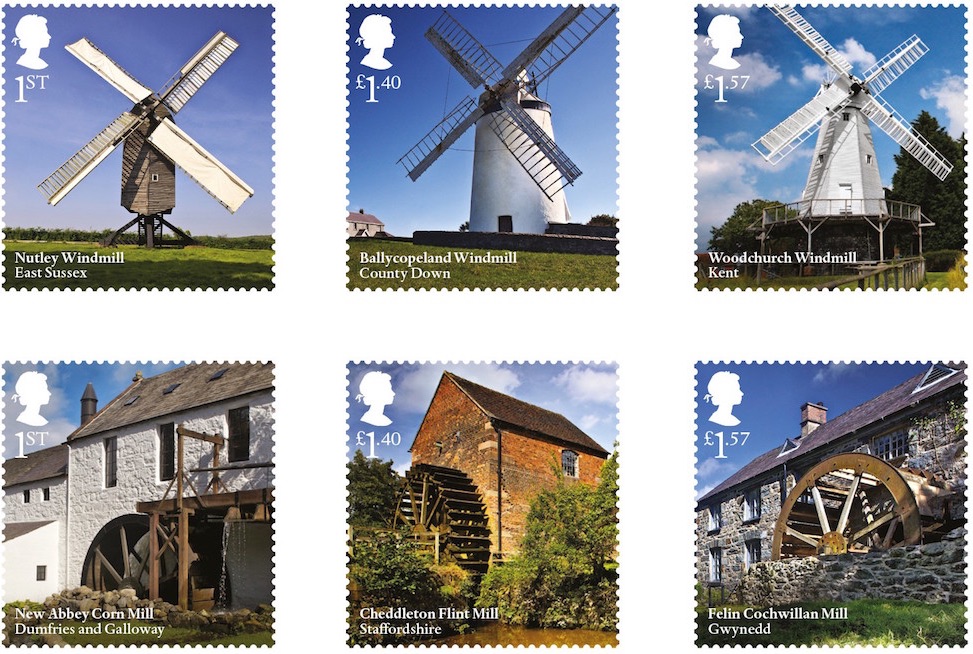
£1.40: Ballycopeland Windmill (Co Down) and Cheddleton Flint Mill (Staffordshire)
£1.57: Woodchurch Windmill (Kent) and Felin Cochwillan Mill (Gwynedd)
Harnessing the power of the wind to provide motive power for transportation and to grind grain between stones to produce flour has been carried out since ancient times. It is believed windmills are of Persian origin, with the concept spreading into Northern Europe as a result of the Crusades. The Greeks invented the two main components of watermills, the waterwheel and toothed gearing and were, along with the Romans, the first to operate undershot, overshot and breastshot waterwheel mills. The first powered mills turned by animals and watermills appeared in Britain shortly after the arrival of the Roman army in AD 43.
Originally developed for milling grain for food production, windmills were gradually adapted for many other industrial uses including the pumping of water. European millwrights became highly skilled craftsmen and as Europeans colonised the rest of the globe windmills spread throughout the world.
As steam power developed, the uncertain power of the wind became less and less economic and as a result, only a small number of these elegant structures that once extracted power from the wind still exist. These remaining windmills are an historic and photogenic reminder of a past technological age but a number of mills have been restored either visually, or in some cases back to full working order, as a result of the growing demand for organic and non-manufactured foodstuffs. Conversely, whilst watermills were once commonplace many have lost their watermills and machinery and the buildings have been converted for other uses. Fortunately, the original structures of a number of others have been lovingly restored and they have become local tourist attractions. There are two basic types of watermills - one powered by a vertical-waterwheel via a gearing mechanism and the other equipped by a horizontal-waterwheel without such a mechanism. The former can be further divided, depending on where the water hits the wheel paddles, into undershot, overshot, breastshot and reverse shot waterwheel mills. The pinnacles of windmill design include those built by the British who developed many advanced "automatic control" mechanisms over the centuries.